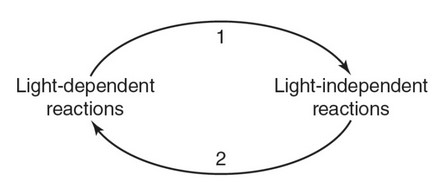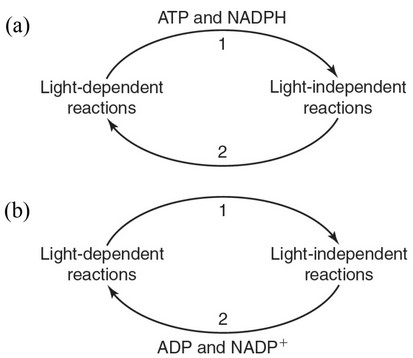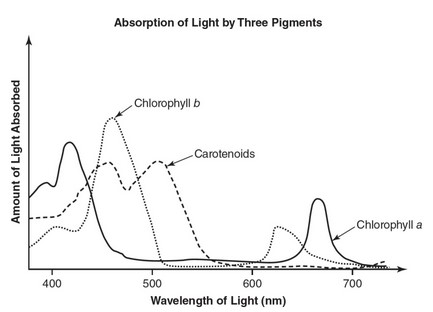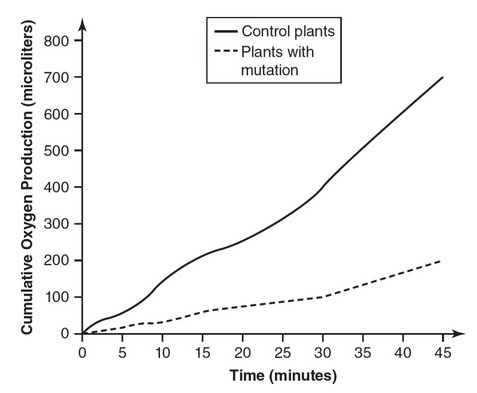Question
The sea slug Elysia crispata eats photosynthetic algae. However, after consuming the algae, the chloroplasts from the algae are incorporated
into the sea slug’s own cells, give the sea slug a green color, and remain functional for up to four months. This phenomenon is called kleptoplasty.
(a) Describe the role of photosynthetic algae in ecosystems.
(b) Explain why kleptoplasty would give Elysia crispata a survival advantage.
(c) An oil spill on the surface of the water reduces the intensity of light in Elysia crispata’s habitat. Predict the effect this would have on Elysia crispata’s survival.
(d) Justify your prediction from part (c).
▶️Answer/Explanation
Ans:
(a) Photosynthetic algae are autotrophs—they make their own food
and are consumed by other organisms.
(b) Kleptoplasty would give Elysia crispata a survival advantage
because the chloroplasts that remained functional in the Elysia
crispata’s cells would provide the sea slug with food.
(c) Reducing the intensity of light in Elysia crispata’s habitat would
have a negative impact on Elysia crispata’s survival.
(d) Photosynthesis requires light energy, so reducing the light intensity
would reduce the amount of photosynthesis the chloroplasts would
perform and the amount of food from those chloroplasts that would
be available to Elysia crispata. The sea slug might become more
dependent on consuming other food sources.
Question
The light-dependent and light-independent reactions of photosynthesis exchange materials and are interdependent, as shown in the following figure.
(a) Identify the molecules the light-dependent reactions provide to the light-independent reactions. Label arrow 1 with those molecules.
(b) Identify the molecules the light-independent reactions return to the light-dependent reactions. Label arrow 2 with those molecules.
(c) An inhibitor of the enzyme Rubisco is added to a plant cell.
Explain which part of photosynthesis would be most directly affected by this inhibitor.
(d) A student claims that the light-independent reactions of photosynthesis would stop if a plant was kept in the dark for a
long period of time. Use your knowledge about photosynthesis to support the student’s claim.
▶️Answer/Explanation
Ans:

(c) Rubisco is an enzyme that is used in the light-independent reactions
(the Calvin cycle) of photosynthesis, so the light-independent
reactions would be most directly affected by an inhibitor of
Rubisco.
(d) The light-independent reactions of photosynthesis require ATP and
NADPH that are produced by the light-dependent reactions of
photosynthesis. If a plant was kept in the dark for a long period of
time, the light-dependent reactions would stop and the ATP and
NADPH that are required for the light-independent reactions would
not be produced. Thus, the light-independent reactions would stop
when their supply of ATP and NADPH was depleted.
Question
The following graph shows the absorption spectrum for the pigments chlorophyll a, chlorophyll b, and carotenoids.
The following table shows the wavelengths of different colors of visible light.
| Color | Wavelength (nm) |
| Violet | 380-450 |
| Blue | 450-495 |
| Green | 495-570 |
| Yellow | 570-590 |
| Orange | 590-620 |
| Red | 620-750 |
(a) For each of the three pigments, identify the color of light that will be most absorbed by that pigment. Use the graph to justify your
answer.
(b) A mutation causes a plant to lose its ability to produce the pigments chlorophyll a and b. A student wants to design an experiment to study the rate of photosynthesis in the plant with this mutation. Identify an appropriate control for the experiment.
Identify the independent and dependent variables in the experiment.
(c) The following figure graphs the rate of photosynthesis (as measured by oxygen production) in control plants and in plants with the mutation described in part (b).
Calculate the rate of photosynthesis in both sets of plants during the first 30 minutes of the experiment.
(d) Plants that use carotenoids as their primary photosynthetic pigment are grown under three different wavelengths of light: 450 nm, 500 nm, and 550 nm. Predict which group of plants will perform the least amount of photosynthesis, and justify your prediction.
▶️Answer/Explanation
Ans:
(a) Chlorophyll a will absorb the most violet light because its peak
absorbance is at approximately 425 nm, which is in the range for
violet. Chlorophyll b will absorb the most blue light because its
peak absorbance is at approximately 480 nm, which is in the range
for blue. The carotenoids absorb the most green light because their
peak absorbance is at approximately 510 nm, which is in the range
for green.
(b) An appropriate control would be a plant without the mutation that
could produce chlorophyll a, chlorophyll b, and carotenoids. The
independent variable would be the presence or absence of
chlorophyll a and chlorophyll b. The dependent variable would be
the rate of photosynthesis.
(c) Rate of photosynthesis in the control plants = 400 microliters
oxygen/30 minutes = 13.3 microliters oxygen/minute
Rate of photosynthesis in the plants with the mutation = 100
microliters oxygen/30 minutes = 3.3 microliters oxygen/minute
(d) The plants grown under light with a wavelength of 550 nm will
perform the least amount of photosynthesis because carotenoids absorb the least amount of light energy at 550 nm. The absorbance
is greater at 450 nm and 500 nm than it is at 550 nm, so less
photosynthesis will occur at 550 nm.
